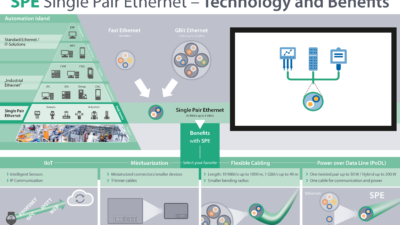A report from technology analyst house Vision Mobile uses the mega label to denote the rapid developments in the Internet of Things (IoT) market and what it means for developers and consumers as technology becomes "smarter."

The trends, progressions, and swings happening in the Internet of Things (IoT) market are no longer just trends. Now they’re called "megatrends." A report from technology analyst house Vision Mobile uses the mega label to denote what it highlights as a handful of key factors currently being played out in across the IoT developer coalface.
Interdependency matters
Vision Mobile noted that IoT markets are interdependent and that this means that IoT developers will need to work across industry boundaries.
IoT markets (or perhaps we could use the term "locations" or "deployment scenarios") must indeed be interdependent. The Internet of Showers (IoS) arena must be DNA-linked to the Internet of Connected Bathrooms (IoCB) market, which, in turn, must be logically related to and a family member of the Internet of Hotels (IoH).
Further still, the Internet of Hotels (IoH) is a member of the smart cities market and the smart cities ‘movement’ is, of course, part of a wider drive towards a smarter planet.
Developers working in one corner of the IoT market must think about the wider world in which their software will play out. In particular, they should consider its interdependency on other device data streams. This is a big ask, since software programmers don’t always like to think "big picture." That’s what makes them good at focusing on the detail of the job in hand.
Vision Mobile reported that smart home, connected car and smart city all form a defined cluster. Because of this, developers active in one area are likely to be active in the others as well.
Wearables, on the other hand, is a comparatively stand-alone IoT vertical, according to the report—although one might question the validity of this assertion, given the role wearables are set to play in the wider healthcare market at large.
Home is where the IoT is
In terms of which IoT vertical holds the greatest number of active software application developers, Vision Mobile estimates that smart home ranks highest, with 1.4 million programmers. This lead is followed by retail at 1.1 million and industrial IoT and wearables at 1 million each.
Smart city, medical and connected car all command just less than one million developers. Possibly too mega a forecast to make, Vision Mobile’s figures may look very different before the end of this decade. The market is, surely, developing and moving that fast.
What shapes a megatrend?
The takeaway from all these projections and postulations is that the world of the IoT developer is multi-layered. On the one hand, an IoT programmer needs to choose an IoT vertical and thus focus on health or industrial apps or connected cars and so on.
On the other hand, they also need to decide whether they will focus on the data layer and analytics, or the embedded control layer typically found in "firmware" or delivered from the back end at the data center, or perhaps the upper functionality layer, where the user interface and so-called user experience (UX) resides.
Onward from IoT megatrends, we can logically then start to look at gigatrends, teratrends and petatrends. Thankfully, those aren’t going to happen yet.
Adrian Bridgwater is editor at Internet of Business. This article originally appeared on Internet of Business, a CFE Media content partner. Edited by Chris Vavra, production editor, Control Engineering, CFE Media, [email protected].


